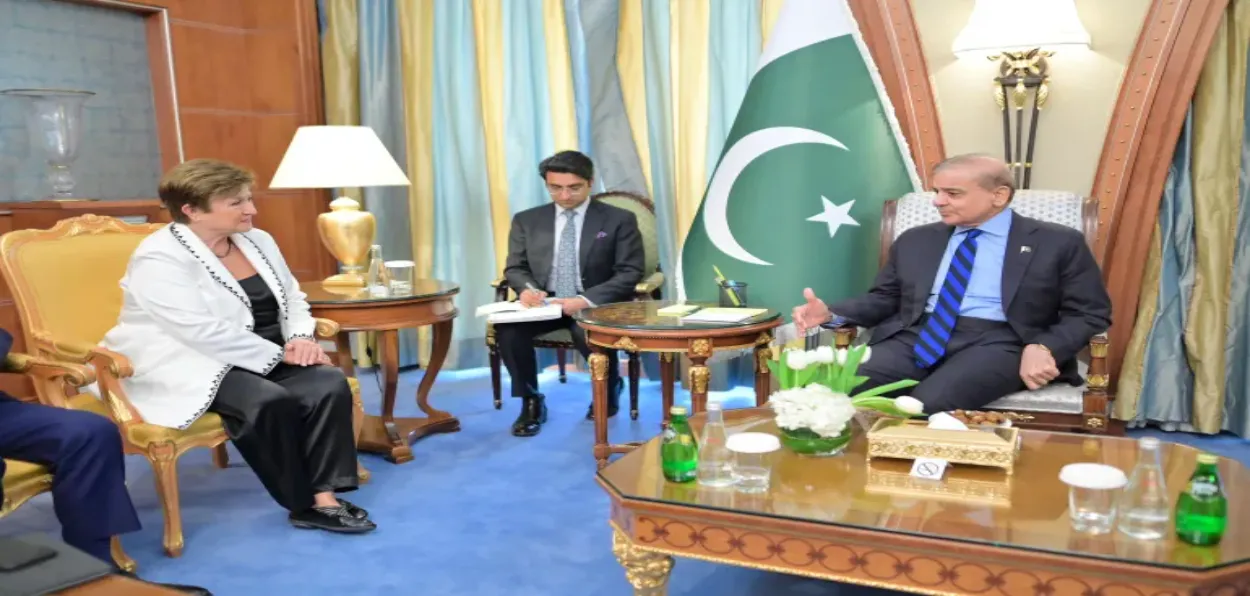
 Saquib Salim
Saquib Salim
Recently after the terrorist attack on Hindu tourists in Pahalgam, Kashmir (22 April, 2025) India retaliated by attacking the terrorist bases in Pakistan occupied Kashmir (PoK) and Pakistan on 7 May. The approach was similar, yet on a smaller scale, to that of the USA, Russia or Israel against the terrorism.
The world has not forgotten the US invasion of Afghanistan or Iraq as a part of its war against terrorism. But, when India was trying to destroy any future terrorist threat against her people the West seemed to be supporting the terrorists. On 9 May, when Operation Sindoor, the military offensive against the terrorists, was going on and the Pakistan Army was bombing Indian civilians, the International Monetary Fund (IMF) decided to aid Pakistan with more than 2 billion US dollars.
Interestingly, this aid by the IMF included an extra $1.4 billion under the Resilience and Sustainability Facility (RSF) which aims at improving disaster preparedness. In simple words, the IMF provided aid to Pakistan, in between an ongoing conflict with India, to develop an infrastructure against possible armed attack.
Of course, India protested against this move by the IMF. The Western world turned a deaf ear to India and weakened the war against the terrorism. Irrespective of the fact that several of the terrorists targeted by the Indian Army are wanted by the Western countries, including the USA, as well.
Was this move by the IMF and the West new? Was it just a coincidence that the loan was sanctioned at a time when it would hurt the Indian efforts against the terrorism? A cursory look at the history of the IMF is enough to tell us that the economic aids to Pakistan are directly proportional to attacks on India.
Starting from 1958, the IMF has provided loans to Pakistan more than 24 times. The correlation between these loans and attacks on India is quite evident. The second and till that time largest amount to Pakistan was lent to Pakistan on 16 March 1965, which had to be completed by 15 March 1966.
What was going on between India and Pakistan at the time? In January 1965, Pakistan had started claiming several border posts in Gujarat. India tried to solve the situation at the negotiation table but the talks failed in February as the tensions increased between both the countries. The IMF, at that time, lent $ 37,500 to Pakistan. Almost after a month, on 24 April, Pakistan Army launched Operation Desert Hawk with the US made Patton Tanks to capture Rann of Kutch in Gujarat. Needless to say that the US economic assistance to Pakistan also peaked between 1960 and 1965, which helped Pakistan to invest in its military infrastructure.
Pakistan did not stop at Operation Desert Hawk and launched Operation Gibraltar in August. Pakistan Army attacked Kashmir and the escalation led to the 1965 India Pakistan War. The Indian Army decisively defeated the enemies’ US made tanks.
The next IMF loan to Pakistan was in 1968. The US economic assistance added to it even more. This was a time when Pakistan started sponsoring terrorists in Kashmir. Maqbool Bhat escaped from Tihar and NLF was expanded which eventually led to the Ganga hijacking in 1971. Until then, Pakistan believed in direct military intervention in Kashmir but after 1965, they started sponsoring ‘insurgents’ to create terror.
On 16 December 1971, India handed out one of the most decisive defeats to any army in the modern times when more than 90,000 Pakistan Army personnel surrendered in front of the Indian Army. Pakistan was divided into two. Its military was on the backfoot. India seemed to dictate the terms at the negotiation table. What did the West do? The IMF bailed out Pakistan with another loan on 18 May, 1972. Pakistan got a much needed boost at the time and in the end affected the outcome of the peace treaty signed on 2 July at Shimla, popularly known as Shimla Pact.
Almost a year later, the IMF sanctioned another loan to Pakistan on 11 August 1973. Interestingly, on 28 August Pakistan signed the Delhi agreement to repatriate Pakistani citizens held as Prisoners of War (PoWs) and other Urdu speakers. Pakistan did not take back its Urdu speakers which would create a refugee problem in India in coming decades.
Pakistan received two loans from the IMF on 28 December 1988. One loan of $273,150 would end on 30 November 1990 and another loan of $382,410 on 27 December 1991. At this time, US military assistance to Pakistan was also at one of its highest in wake of CIA sponsored armed conflict against the USSR in Afghanistan. The dates match with the heightened activities of the Pakistan sponsored terrorists in Kashmir.
In this period, 1989 to 1991, the terrorists in Kashmir killed Hindus, kidnapped the daughter of the Home Minister of India and assassinated several government officials. During this period, Pakistan’s ISI had allegedly created a network of its operatives across India which were used in terrorist strikes like 1993 Bombay Bomb blasts.
Interestingly, though the loans were sanctioned between 1993 and 1997 but the amounts drawn, or actually allotted, were quite low as compared to the other years when India faced more attacks. US assistance to Pakistan also remained suspended between 1992 and 2001. This was a time when India was not facing direct major attacks.
October 20, 1997, the IMF lended two loans to Pakistan. Both the loans would end on 19 October 2000. India witnessed the Pakistan Army intruding in Kargil during this period. After the Kargil Conflict Pakistan received another loan in 2000 and again on 6 December 2001. Indian Parliament was attacked by the terrorists on 13 December 2001. The Indian government at the time blamed the attacks on the terrorist organisations operating from Pakistan.
One of the deadliest terrorist attacks in Indian history was carried out by the terrorists from Pakistan on 26 November 2008 in Mumbai. The attack shook the nation and forced India to reconsider its policies towards terrorism and Pakistan. The IMF sanctioned a loan of $7,235,900 on 24 November 2008 to the country from where the terrorists came to attack India.
Here, we should also take into account that the US economic help was also augmenting Pakistan Army’s expenditures on terrorists.
ALSO READ: Ajit Doval: Master spy, institution builder, patriot
Maybe the IMF is not aware of these ‘coincidences’. But, should not the IMF study the impact of all these economic aids? Why, after successive economic assistance, the economy and standard of living in Pakistan is going down? Why with every financial help the terrorist organisations thrive more? An aid to a terrorist sponsoring nation will put the peace of the world in danger.
